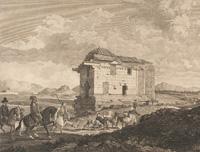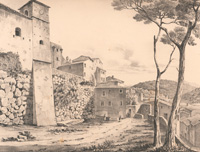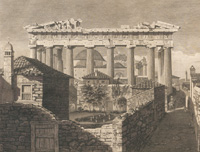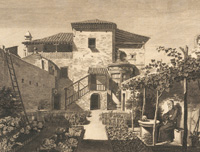
introduction
the profile of the travellers
from a dutch point of view
the power of monuments
idealized landscapes
in search of antiquities
everyday life among ruins
in the service of the divine
athens: a place or an ideal?
ancient vs. contemporary
•
acknowledgements
selected bibliography
catalogue
links and resources travellers
|
|
|---|
in the service of the divine
Instead of the temples mentioned by Pausanias, we had in view thirteen lonely churches, all very mean as usual and two Doric columns supporting their architrave
Richard Chandler (1776)
Travellers that toured the antiquities of the Eastern Mediterranean in the 18th and 19th centuries often complained about the distraction of ancient temples, their conversion to churches and mosques and the reuse of ancient building material in later constructions.
The transformation of ancient Greek temples to churches and mosques required architectural alterations, such as the addition of an apse and occasionally a dome, extensions and additions of rooms and the incorporation of the exterior row of columns (peristasis) to the new structure.
Other ancient ruins were incorporated to newly founded churches and monasteries, as in the case of the famous Lysikrates monument in Athens. This ancient building became part of the Capuchins' Monastery at Athens.




